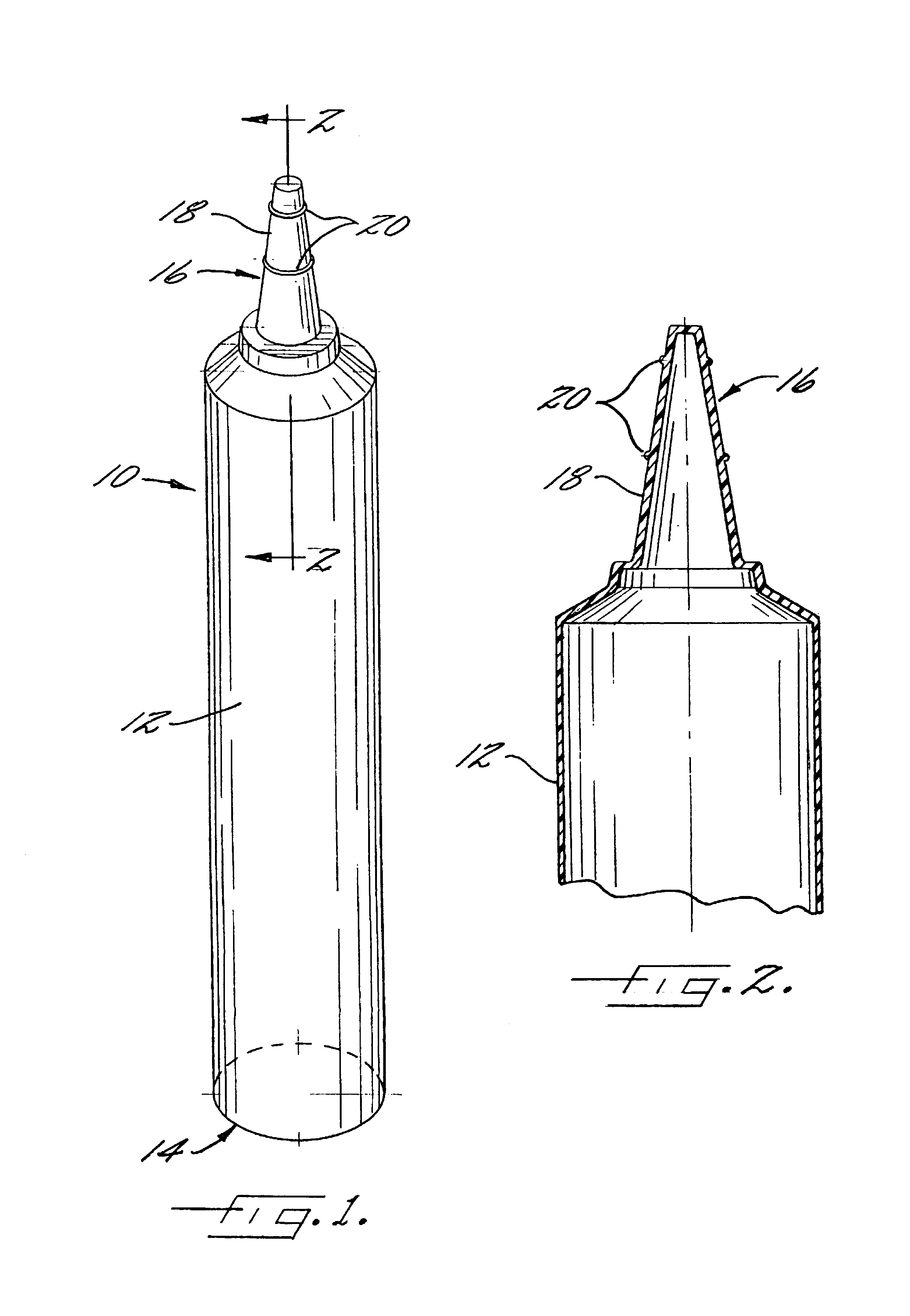Composition for molding thin-walled parts, and injection-molded squeeze tube made thereof
a thin-walled, polymer composition technology, applied in the direction of pliable tubular containers, envelopes/bags making machinery, paper/cardboard containers, etc., can solve the problems of difficult molding, length-to-thickness ratio, injection molding of squeeze tubes, etc., to achieve adequate tear strength, low modulus of elasticity, and high melt index
- Summary
- Abstract
- Description
- Claims
- Application Information
AI Technical Summary
Benefits of technology
Problems solved by technology
Method used
Image
Examples
Embodiment Construction
rence will now be made to the accompanying drawings, which are not necessarily drawn to scale, and wherein:
[0016]FIG. 1 shows an injection-molded squeeze tube in accordance with one embodiment of the invention; and
[0017]FIG. 2 is a cross-sectional view of the squeeze tube taken on line 2—2 of FIG. 1.
DETAILED DESCRIPTION OF THE INVENTION
[0018]The present invention now will be described more fully hereinafter with reference to the accompanying drawings, in which some, but not all embodiments of the invention are shown. Indeed, these inventions may be embodied in many different forms and should not be construed as limited to the embodiments set forth herein; rather, these embodiments are provided so that this disclosure will satisfy applicable legal requirements. Like numbers refer to like elements throughout.
[0019]FIG. 1 shows an injection-molded squeeze tube 10 in accordance with one embodiment of the invention, depicted in the state in which the tube is ejected from the molding appa...
PUM
| Property | Measurement | Unit |
|---|---|---|
| density | aaaaa | aaaaa |
| density | aaaaa | aaaaa |
| density | aaaaa | aaaaa |
Abstract
Description
Claims
Application Information
 Login to View More
Login to View More - R&D
- Intellectual Property
- Life Sciences
- Materials
- Tech Scout
- Unparalleled Data Quality
- Higher Quality Content
- 60% Fewer Hallucinations
Browse by: Latest US Patents, China's latest patents, Technical Efficacy Thesaurus, Application Domain, Technology Topic, Popular Technical Reports.
© 2025 PatSnap. All rights reserved.Legal|Privacy policy|Modern Slavery Act Transparency Statement|Sitemap|About US| Contact US: help@patsnap.com

